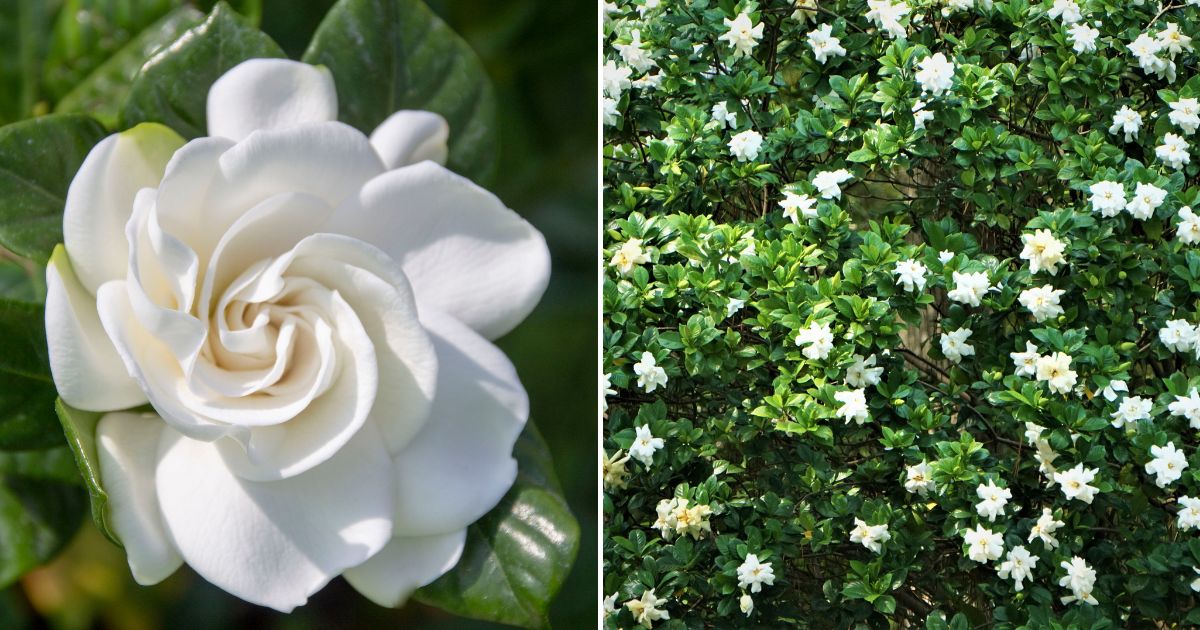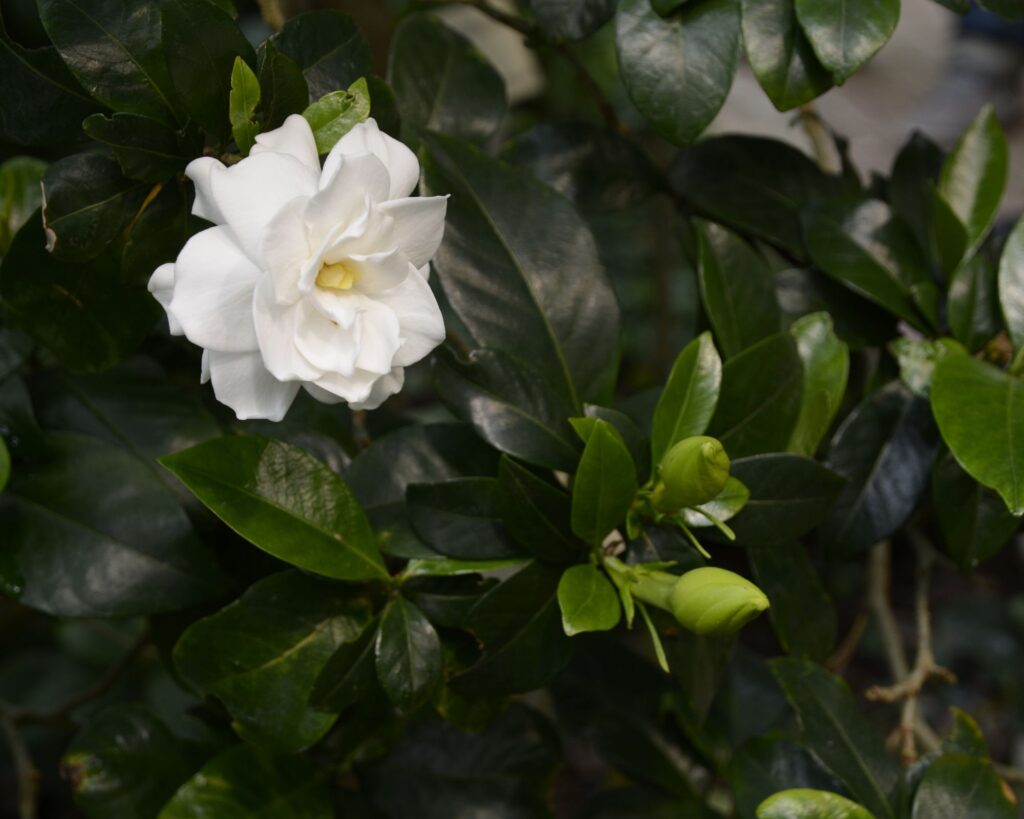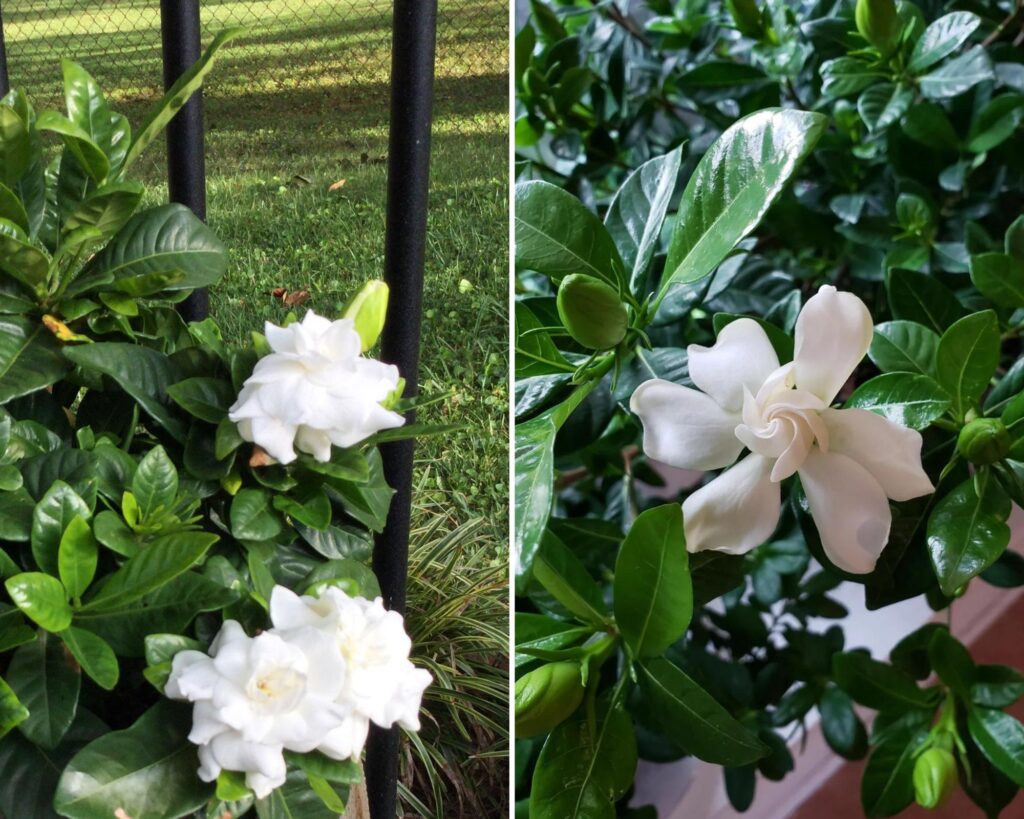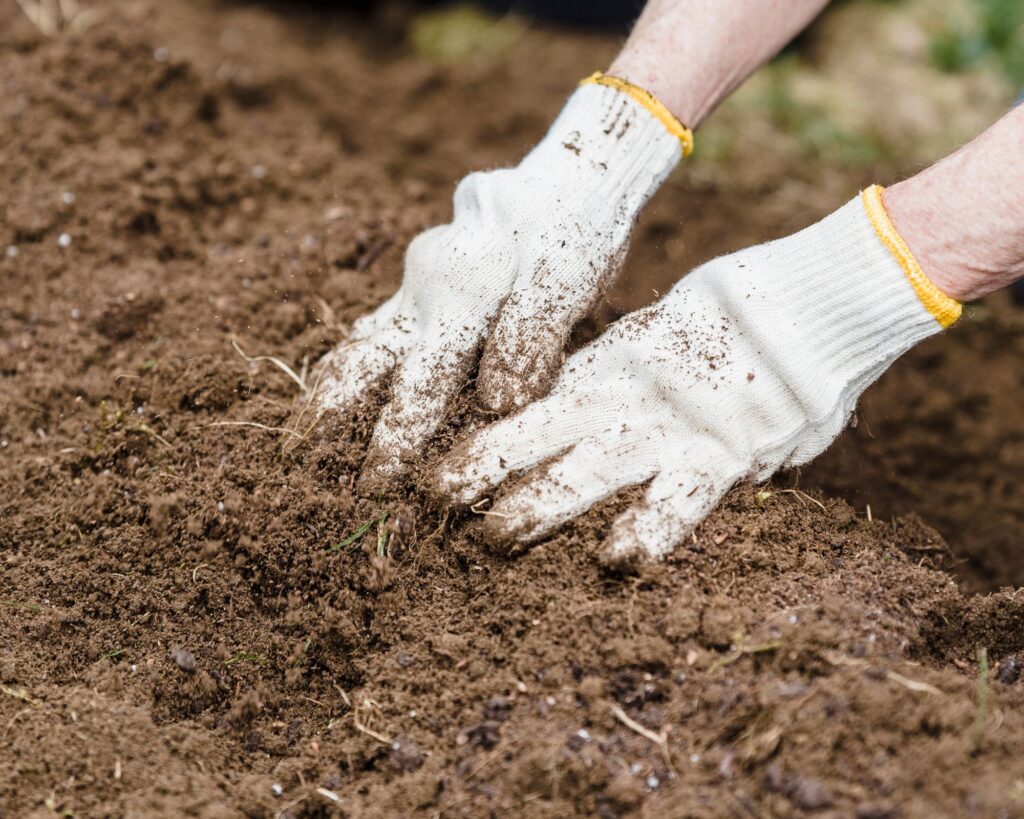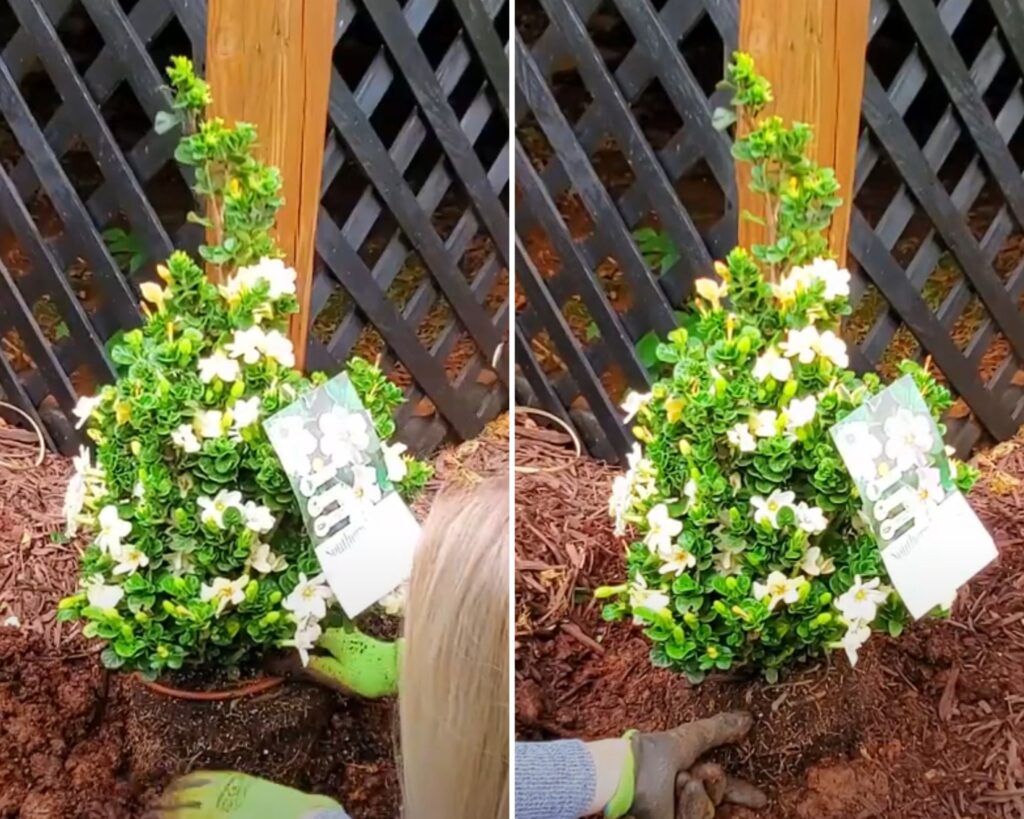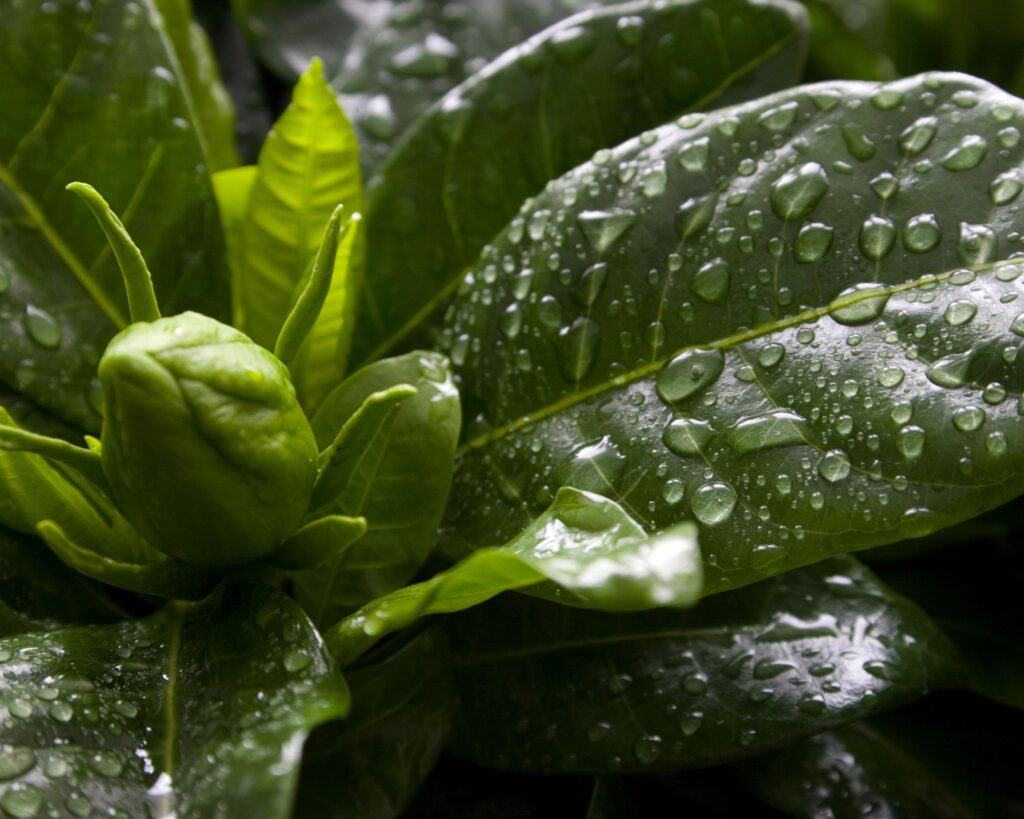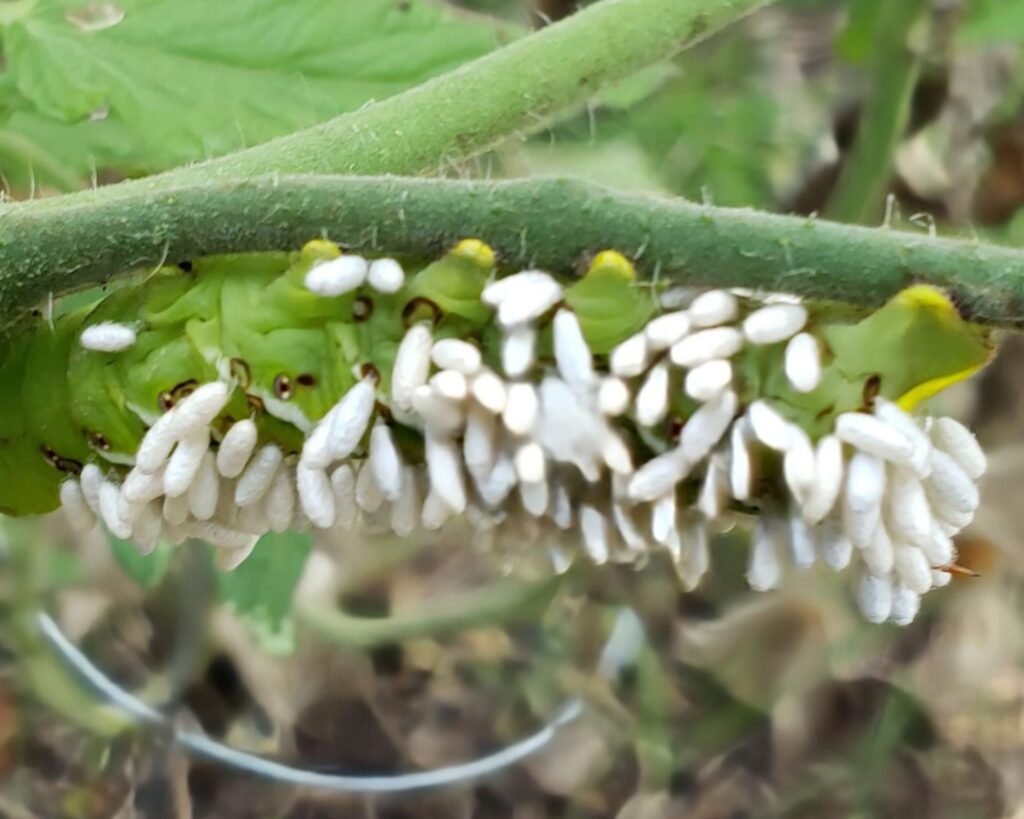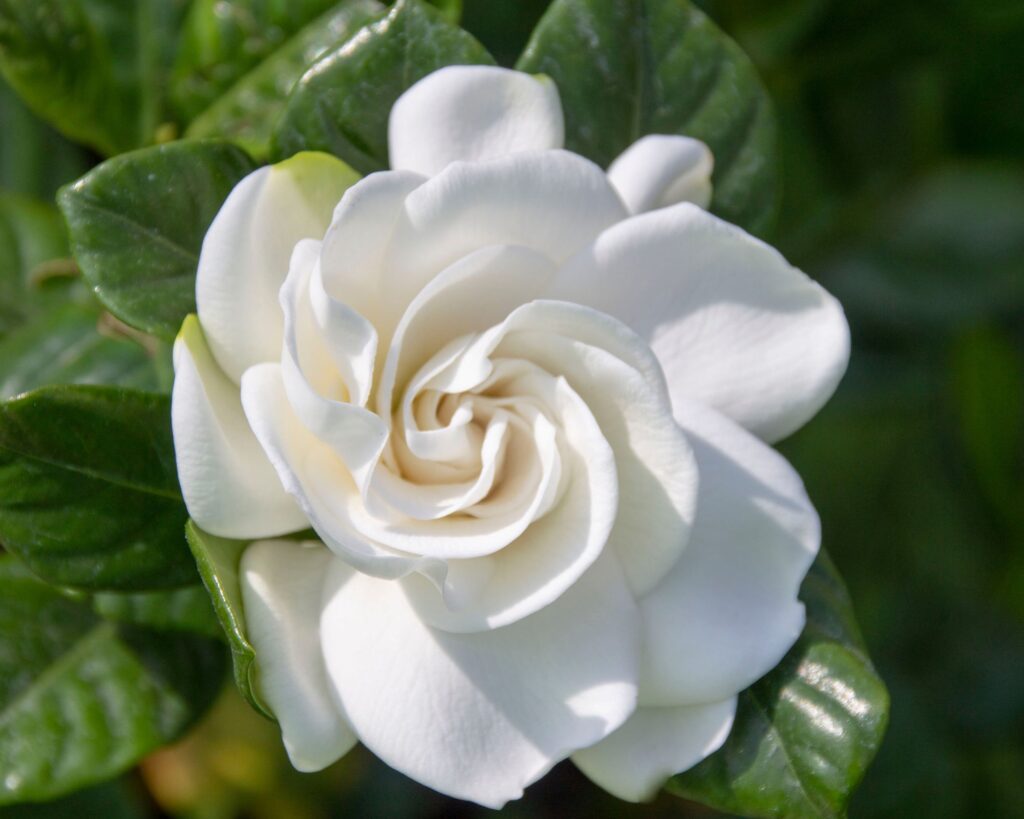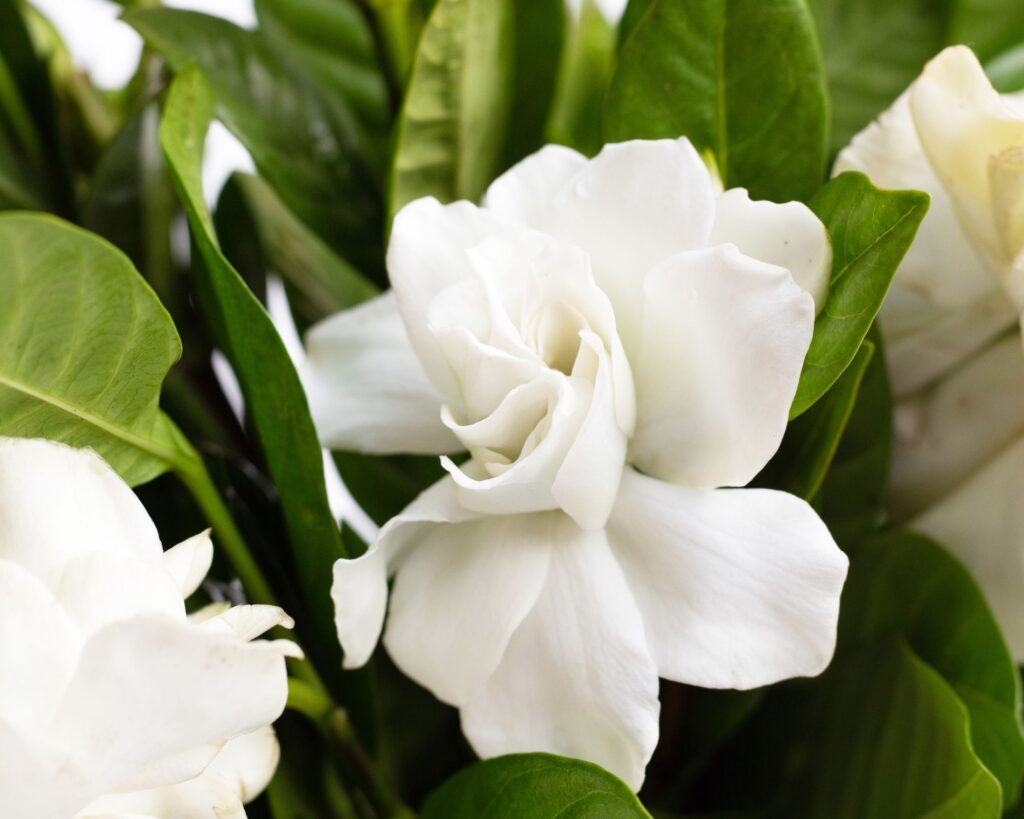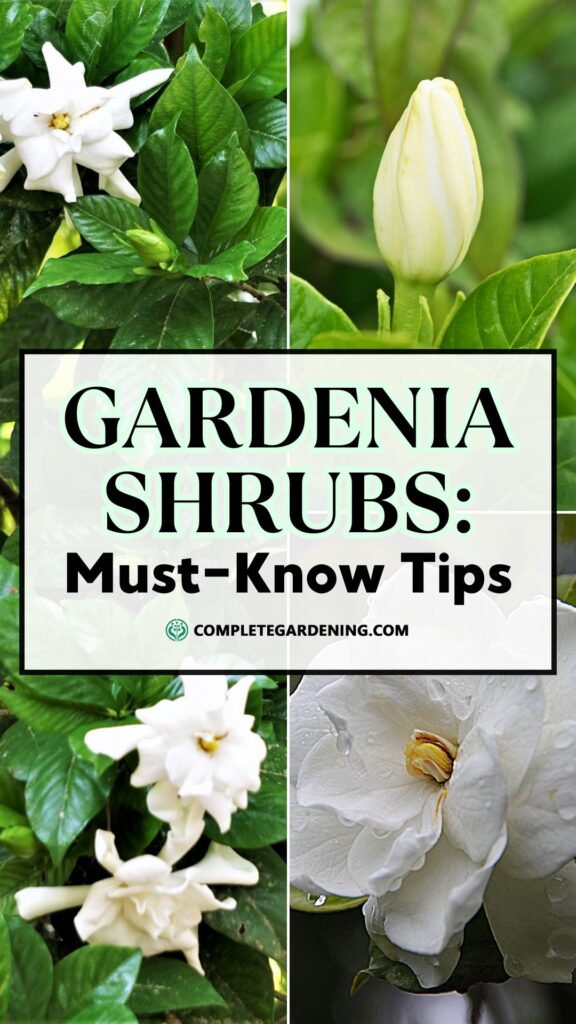Growing a gardenia shrub can turn your garden into a fragrant paradise, filling the air with the scent of sweet, creamy blooms. If you’ve ever longed to capture that captivating aroma and lush beauty in your own outdoor space, you’re in for a treat.
The secret to success? It all starts with choosing the perfect spot – one that basks in sunlight and boasts well-drained soil.
But that’s just the beginning! Consistent moisture is key, but it’s a fine line to walk; too much water, and you risk a soggy, unhappy plant.
Gardenias crave slightly acidic soil, so a quick soil test can make all the difference in achieving those gorgeous blossoms. With the right care and a bit of patience, you’ll find your gardenia thriving, rewarding you with stunning blooms season after season.
And there’s more – regular feeding with an acid-loving fertilizer keeps your gardenia lush, while timely pruning shapes it into a showstopper.
Understanding Gardenias
Gardenias are beautiful shrubs known for their fragrant, white flowers and glossy, dark green leaves. They thrive in specific growing conditions that need attention to detail.
Characteristics of Gardenias
Gardenias, with their creamy white blooms, are prized for their strong, sweet fragrance. These evergreen shrubs can grow between 2 to 8 feet tall. The leaves of the gardenia are usually dark green and have a waxy texture.
The blooming period generally occurs from late spring to mid-summer, but with proper care, they might bloom more than once. Gardenias are known for their delicate and elegant appearance, making them a popular choice for gardens and indoor decorations.
Ideal Growing Conditions
Gardenias require a warm, humid climate to flourish. You’ll want to plant them in well-drained, acidic soil with a pH level between 5.0 and 6.5. It’s crucial to ensure that they receive at least 4 to 6 hours of sunlight daily.
Morning sun and afternoon shade work best.
Keep the soil consistently moist, but avoid overwatering. Good air circulation is important to prevent fungal diseases. It helps if you regularly check the pH and adjust it as needed.
Getting Started with Gardenias
When you’re ready to grow gardenias, it’s essential to choose the suitable variety, find the perfect planting spot, and understand the timing. These factors play a crucial role in ensuring your gardenia thrives.
Choosing the Right Variety
Gardenias come in multiple varieties, each with unique traits. Some popular options include the ‘August Beauty’ for long blooming seasons and the ‘Mystery’ for larger flowers.
Understanding your climate is important, as certain types are more resilient in cooler or warmer regions.
Consider the plant’s mature size to ensure it fits your space without overcrowding. You may prefer a smaller variety if space is limited. Look for pest-resistant strains to reduce maintenance tasks.
Researching your options helps you pick a gardenia variety that will flourish in your garden conditions.
Planting Location and Soil Preparation
Selecting the right location is vital for your gardenia’s success. Aim for a spot with partial shade, as full sun can be too harsh, especially in hotter climates. Morning sun with afternoon shade is ideal.
Gardenias crave well-drained, acidic soil with a pH of 5.0 to 6.0. Before planting, enrich the soil with organic matter like compost to boost nutrients and improve drainage. Test the soil’s pH and amend it with sulfur if needed.
Space plants adequately to ensure airflow, reducing the risk of fungal infections. Mulch around the base to retain moisture and suppress weeds.
When to Plant Gardenias
Timing is key when planting gardenias. Spring and early summer are generally the best choices, allowing the plant to establish roots before facing extreme temperatures. If you reside in a mild climate, fall planting is also an option.
Avoid planting during frosty or extremely hot periods to reduce stress on the plant. Water the plant thoroughly upon planting to establish roots quickly. Monitor weather conditions and choose a calm day to avoid wind and weather stresses.
Adjust planting schedules based on your zone and climate conditions.
Caring for Your Gardenia Shrub
Taking care of your gardenia shrub involves consistent watering, applying the right mulch and fertilizer, and routine pruning. These steps are essential to promote healthy growth and abundant blooms.
Watering Techniques
Gardenias thrive in moist soil, so it’s important to water them regularly. Use lukewarm water to avoid shocking the roots. It’s best to water early in the morning or late afternoon to minimize evaporation.
Ensure that the soil is well-drained. Too much water can lead to root rot, while too little can cause the leaves to yellow and drop. Consider using a drip irrigation system for consistent moisture levels.
Keep an eye on your local weather to adjust your watering schedule accordingly. During rainy periods, you might need to water less frequently.
Mulching and Fertilizing
Applying mulch around your gardenia helps retain moisture and keeps weeds at bay. Use organic mulch like pine bark or shredded leaves, spreading it about 2 inches thick around the base but not touching the trunk.
For fertilizing, choose an acid-loving plant fertilizer. Feed your gardenia every 4-6 weeks during the growing season. Be sure to follow package instructions to avoid over-fertilization, which can harm your plant.
Regular soil testing can inform you if additional nutrients are needed. If your gardenia leaves appear yellow with green veins, this might indicate a nutrient deficiency, such as iron, which you can correct with a suitable supplement.
Pruning and Maintenance
Pruning your gardenia helps maintain its shape and encourages flowering. The best time to prune is in late spring after it blooms. Trim back overgrown branches and remove any dead or diseased wood.
Use clean, sharp pruning shears to ensure cuts are smooth. Keep an eye out for signs of pests like aphids or whiteflies, as these can harm your shrub.
Regular maintenance also includes checking for diseases such as root rot or powdery mildew. Implementing pest control measures early can help protect your gardenia from damage.
Pest and Disease Management
Gardenia shrubs are beautiful, but they can be vulnerable to a range of pests and diseases. Common pests can affect the growth of your gardenia, while organic control methods provide effective solutions to maintain a healthy plant.
Common Pests and Problems
Gardenias frequently attract pests like aphids, scale insects, and whiteflies. These pests feed on the plant’s sap, leading to leaf yellowing and stunted growth.
Leaf spot and sooty mold are common fungal issues caused by excessive moisture and pest infestations.
Identifying signs early can help you manage these problems more effectively. Check for sticky residue on leaves, a sign of pest activity, which can lead to mold growth if not treated promptly.
Regularly inspect the underside of leaves and stems to catch infestations early.
Organic Control Methods
To manage gardenia pests organically, start by introducing beneficial insects such as ladybugs and parasitic wasps. These natural predators can control pest populations efficiently.
Apply a neem oil spray or insecticidal soap directly to affected areas. For fungal issues, a baking soda solution is beneficial: mix one tablespoon in a gallon of water and spray weekly.
Regular pruning of diseased foliage promotes air circulation, reducing fungal growth.
Hand-picking visible pests can also help manage small infestations, keeping your gardenia healthy naturally.
Encouraging Blooms
Gardenias can produce stunning, fragrant blooms with proper care. Key strategies include optimizing growing conditions and regular maintenance.
Optimizing Flowering Conditions
To encourage lush blooms, focus on temperature, light, and moisture. Gardenias thrive in temperatures between 65-70°F during the day and slightly cooler at night.
Position your gardenia where it receives bright, indirect sunlight for at least four hours a day. Too much direct sunlight may scorch the leaves.
Regular watering is essential; keep the soil consistently moist but not soggy. High humidity also benefits these plants, so consider misting them or placing a humidifier nearby if indoors.
Fertilize every two to four weeks during the growing season with an acid-based fertilizer to keep the nutrient levels balanced and promote more flowers.
Deadheading and Bloom Boosting Tips
Deadheading spent blooms helps prevent energy waste and encourages new buds. Use clean, sharp scissors to remove the faded flowers just above the first set of healthy leaves. This practice can lead to a more vigorous growth cycle and additional flowering.
Try using a natural bloom booster, like a diluted fish emulsion, every month to further support flowering. Ensure the air around the gardenia isn’t too dry as airflow impacts bloom production.
Rotate your gardenia periodically to ensure even light exposure and balanced growth. By consistently deadheading and maintaining humidity, your gardenia may reward you with abundant, beautiful blooms.
Growing a gardenia shrub can truly transform your garden into a fragrant oasis. With their stunning white blooms and captivating aroma, gardenias are a joy to cultivate.
By selecting the right location with ample sunlight, ensuring well-drained, slightly acidic soil, and providing consistent moisture, you set the stage for a thriving gardenia.
Regular feeding with an acid-loving plant fertilizer, proper pruning, and vigilant care against pests will encourage lush growth and an abundance of blooms.
With these tips, your gardenia shrub will not only survive but flourish, adding elegance and fragrance to your garden year after year.
